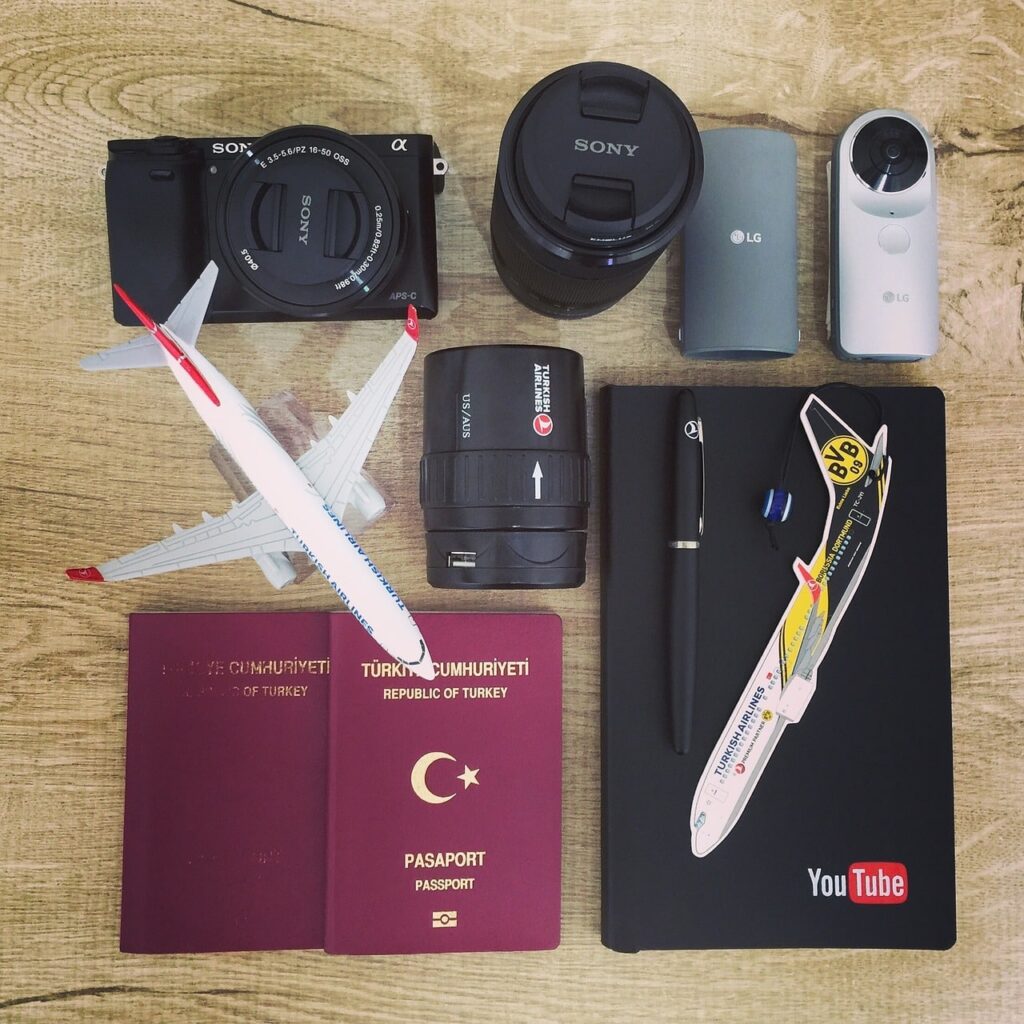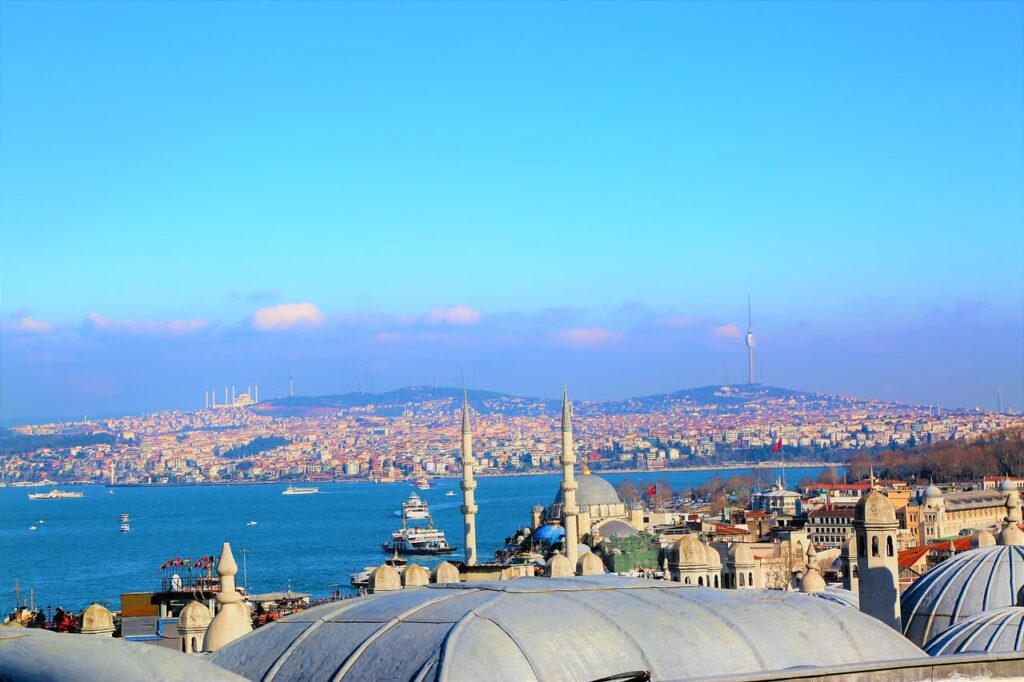What to take with you on your trip to Turkey?
In case you are traveling to Turkey soon, we are going to recommend you some things that you can take on your trip to this country.


 +1M
+1M
Holafly saves you +30% compared to other roaming fees
Plans that may interest you
Turkey is one of the most visited countries in the Middle East because of its wonderful landscapes and archeological treasures. If you are traveling to this country, we are going to recommend some things that you can take on your trip to Turkey.
The weather in Turkey is not the same of your home country, so you need to pick the perfect outfit. In this article, we want to show you how to prepare your suitcase for your trip.
In Turkey, you will find different traditions, so before traveling we recommend you make sure you can connect to the internet during your trip, so you can use Google Maps, or the translator because the spoken language in Turkey is different.
eSIM for Turkey
>>Buy the best eSIM for Turkey<< Get 5% OFF. Code: MYESIMNOW5
Technology for a digital traveler in Turkey
Nowadays, we need to be connected all the time, so it is very important to take the necessary devices with you.
Cellphone, camera, and headphones
You are going to need to keep in touch with your family and friends, use your GPS, take pictures, and listen to music during your travels, so we recommend you take your cellphone or your camera, so you can take pictures of your experiences. It is best if you take these types of devices in your hand luggage.

Charger or Power Bank
You need to consider this because if you cannot charge your devices, you won’t be able to use them when they run out of battery. We recommend you take a Power Bank that can fully charge your cellphone at least twice.
The power adapter you need to take with you is the F type.
Advice: Have all the needed cables in a small bag so you have them better organized.
What clothes should I take with me?
It is maybe the most important aspect of the list because if you want to enter a mosque you have to be well-dressed. So, you have to take appropriate and comfortable clothes for your trip.
Pick your clothes based on the destination and the weather
Prepare your suitcase depending on the season. Warm clothes for winter, fresh clothes for the summer. If you are planning to visit a mosque, keep in mind the following recommendations:
- Baggy clothes, a blouse with long sleeves and long pants.
- Cover your hair and neck with a scarf for example.
- If you don’t want to be barefoot, take some socks in your bag.
Finally, with very varied weather, do not forget to take an umbrella, some rain shoes, and sunglasses as well. Make sure you are ready for any kind of weather because in Turkey, it can vary a lot.

Clothes for the beach
Turkey’s beaches are beautiful (like the resorts in Antalya, and Bodrum, and more). If you travel at the best moment to visit some of those beaches, take photos, and eat or drink something. Ideally, you bring a change of clothes and a swimsuit, so you can fully enjoy the beach.
Comfortable shoes
Don’t forget to wear comfortable shoes, the kind that are comfy and great for any outfit. In Turkey, you will not stay still, so your suitcase should not miss your best companions for walks.
Local currency and bank card
It is hard to travel with no money, so if you haven’t thought about the local currency in Turkey and the best card for your trip. Whether you change before traveling or when you arrive, choose the option that best suits your needs, a card without commissions, which will be great. Remember that you will have to use Turkish currency for your purchases.
Visa, documentation, and insurance
You may be wondering what documents you need to travel to Turkey. We can tell you that in terms of visas, Europeans are exempt as long as they do not exceed a stay of 90 days. In addition, they will need to have a valid passport, travel insurance, and a hotel reservation.

Connect to the internet in Turkey with a SIM card
It is very important to have the internet during your trip. But what is the most accessible option? The best way to connect to the internet is with a virtual SIM for Turkey, this way you will avoid paying for roaming or taking with you an uncomfortable Pocket WiFi.
Mobile translator
How are you going to communicate in Turkey? Many travelers who speak English or Spanish use a portable translator to communicate with locals, but in touristic places, you will find people who speak these previous mentioned, as a second language.
What else should I take with me?
There are some things that you cannot forget.
Toiletry bag and sewing kit:
Pack your necessary personal hygiene items in a toiletry bag, please remember that the quantity limit of a liquid bottle is 100 ml. The sewing kit can help you in a clothing emergency, for example, if a button has fallen off.
Rest Kit
Comfort is a really special point, so we recommend you bring a rest kit: a neck pillow, headphones, and an eye mask or mask.
Suitcase first aid kit for Turkey
It doesn’t need to be that big, you can take a light first-aid kit that does not occupy much space in your suitcase and that is not very heavy. This can include medicines for headaches, small wounds, and more. Some essentials in your medicine cabinet are:
- Antidiarrheal.
- Biodramina (for dizziness).
- Antibiotic and antiseptic.
- Antihistamine.
- Analgesic.
- Bandage, cotton gauze, and plasters.
- Small scissors.
- Antibacterial and mouth cover.
- Sunscreen and lip balm.
Other things that you can take with you:

- Books: You can consider taking with you a book if you know that you are going to read it, a paperback or electronic book can be a good companion for your trip.
- Packing cubes: Ideal for organizing your suitcase and freeing up space.
- Backpack: For you to carry your things’ day by day without occupying your hands. Also, as a carry-on bag for the flight, backpacks are very useful.
- Folding bag: Excellent idea to use it for your purchases, and at the same time take care of the environment.
- Notebook and pen: To write down what you need in case you have to keep this information on hand or close by. Although today, with smartphones and other devices, we can also keep notes.
What to pack in your cabin suitcase to go to Turkey?
We recommend you take with you a little of everything, so you can prevent any issues. It happens that we are never exempt from luggage loss and believe us, if it has not happened to you, you do not want it to. So, take the following things in your cabin luggage to Turkey:
- Two or three changes of clothes.
- A pair of comfortable shoes.
- Your computer and camera with their respective chargers.
- Your hygiene kit and toiletry bag if you have one.
- Documents that you do not carry in your hand luggage.
- Do not forget to bring a scarf or bandana because you will surely need it. Remember to bring a demure change of clothes.
What should you avoid taking in your suitcase to Turkey?
It depends on which suitcase you are referring to, the carry-on and cabin bag. The prohibitions are different in both cases. For example, in your hand luggage and cabin you should avoid carrying:
- Razors, razor blades, and epilators.
- Syringes and needles (In case you keep them in your medicine cabinet).
- Sharp elements in general.
- Weapons.
- Sports equipment (not everything, if in doubt, consult the airline).
Try a suitcase with a green seal
Take care of the environment and go for a suitcase with a green seal. Start including this in your habits by packing the following:
- Bamboo toothbrushes.
- Washable and reusable makeup remover towels.
- Menstrual cup (for women).
- Bottle for water.
- Cloth bag in case you need to carry your purchases.
- Digital eSIM card. The Holafly eSIM allows you to choose exactly how many days you are staying with unlimited data. There are also multiple-destination packages, like the European and the Asian eSIM card, that are available for use.
- Do not print your documents and take them digitally.

Frequent questions
You can dress casually, but they will always be glad if you take care of your appearance, even though they are very used to tourists. To enter a Mosque, you should take the clothes we previously mentioned.
On Turkish Airlines, you can carry up to 23 kilos of weight. The measures for economy class cabin luggage (The one that goes on top of your seat) are 55x40x23cm and must not exceed 8 kilos in weight. If you travel in business class, you can take two suitcases of this size that do not exceed 16 kg. Your suitcase must not exceed the size of 40x30x15cm.
Checking in an extra bag costs $80, but for joint flights, it can cost between $340 and $450. Flights with a layover of more than 24 hours may have an additional cost of $10 to $180 to check the bag.
Baggage allowance means the amount of weight and bags you are allowed to carry for the flight, this is included in the ticket price. It is what you can take as checked and cabin baggage without paying extra.
Recommendations
- Wear appropriate clothes to enter the mosques.
- If you want to get an eSIM Turkey, choose the best option. Holafly is one of the best alternatives in the market, and thanks to the customization feature, it makes it easier for travelers to get one without hurting their budgets.
- Do not forget to bring a warm garment, the weather can vary a lot.
- If you travel to the cost areas in summer, be careful with the food you eat.
- If you are going to carry out risky activities in Turkey such as getting on a hot air balloon, check that your insurance covers you in cases of accidents.
Finally, we want to wish you a happy trip. Remember to be careful and prevent problems, so nothing happens to you. We hope these recommendations help you have a wonderful experience in this country!




 No results found
No results found








